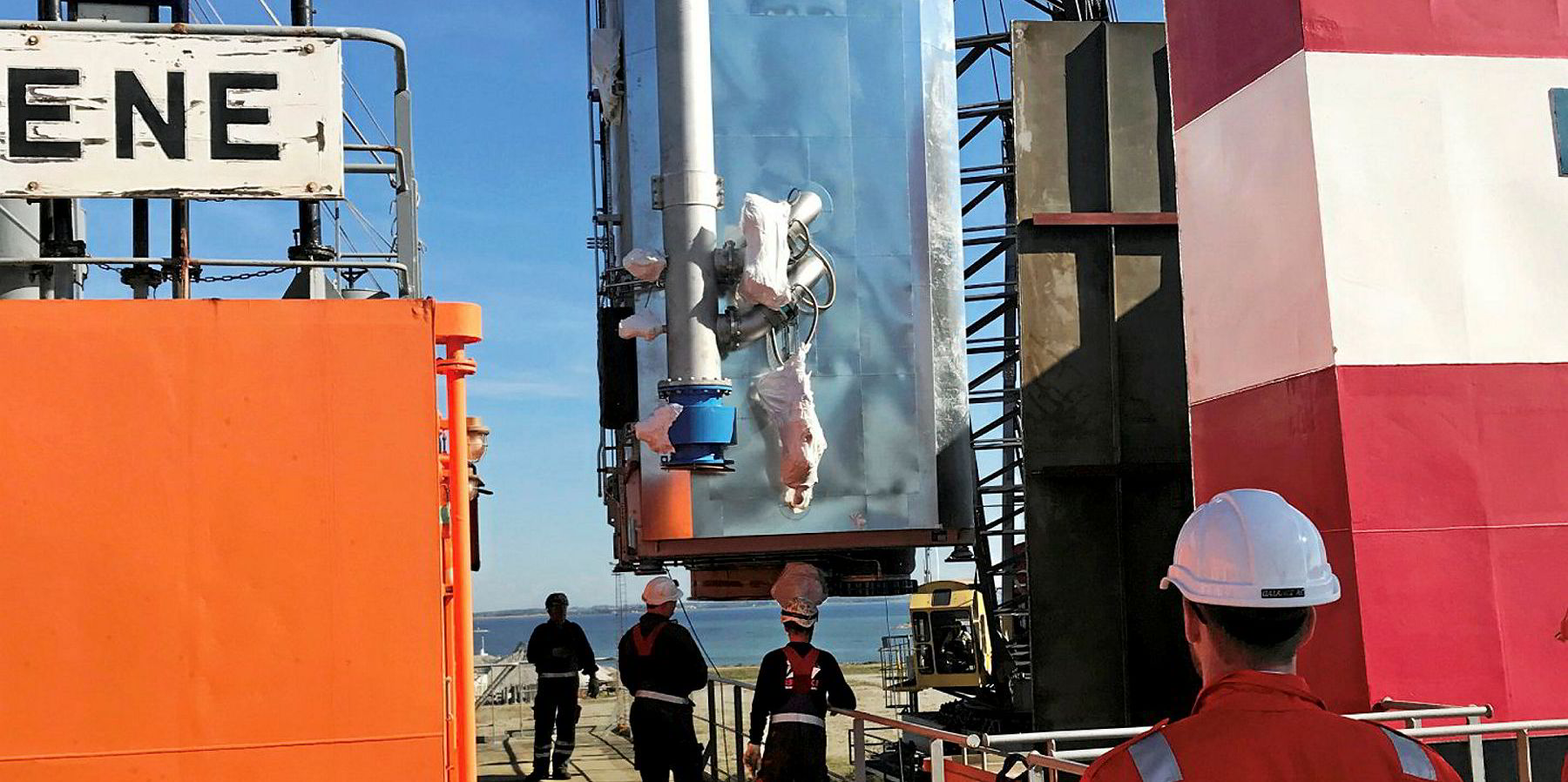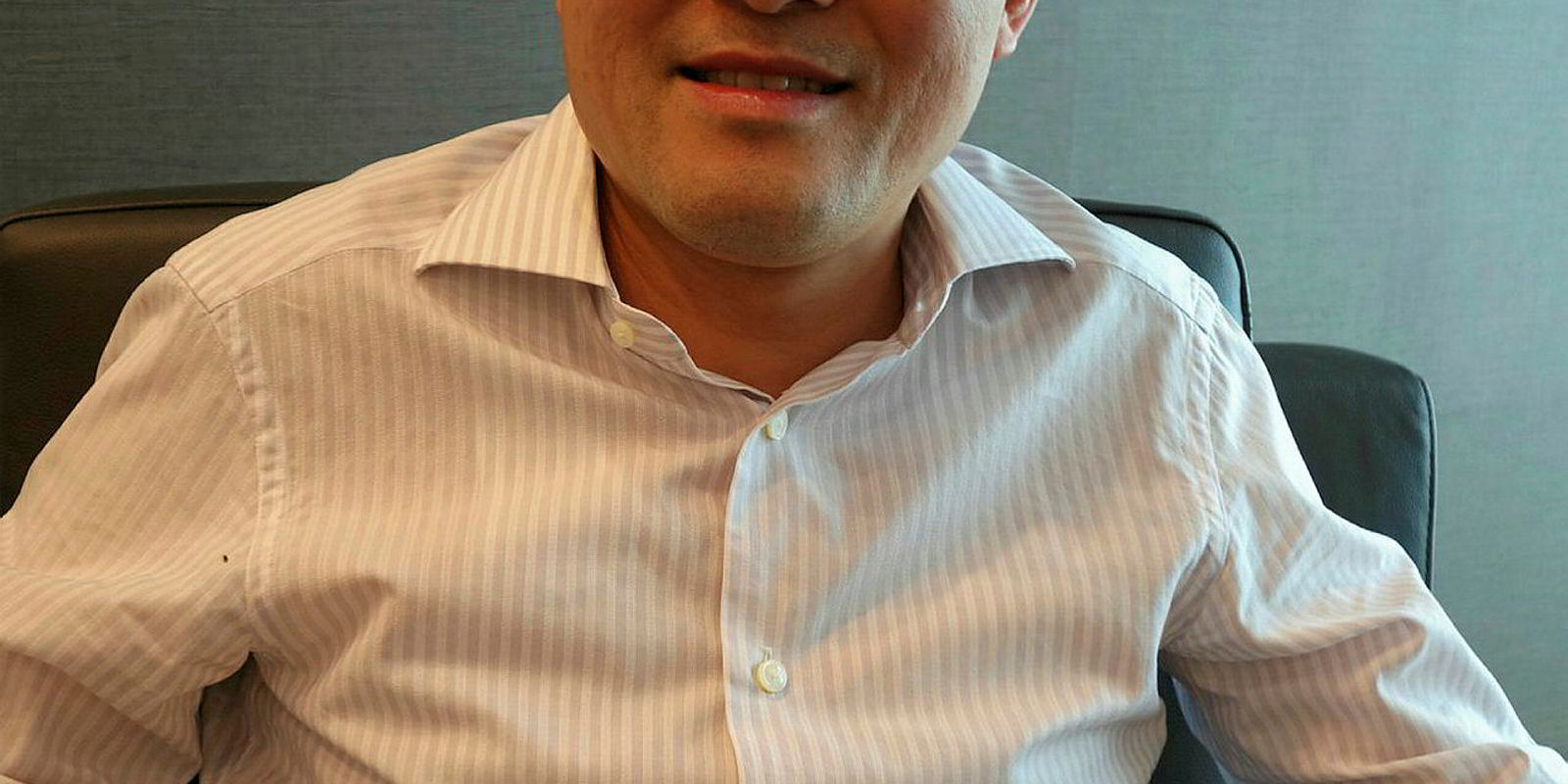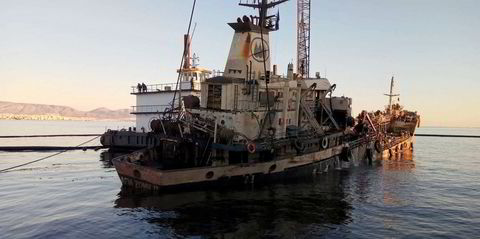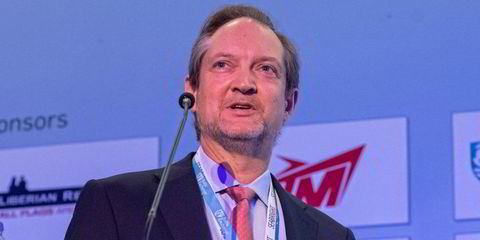The early signs from the period charter markets suggest crude tanker owners that install scrubbers can at least recover their investments — but some market participants believe regulatory and fuel pricing uncertainties could cloud the long-term earnings outlook of their vessels.
With a string of period fixtures since September, a trading pattern for scrubber-fitted tankers has emerged, painting a market landscape that is satisfactory yet underwhelming for owners using exhaust gas cleaning systems.
According to Braemar ACM’s rate assessments for three-year charters, which is the most common period for scrubber-related deals, the daily rate for a scrubber-fitted eco VLCC, for delivery in 2019 or 2020, was $4,000 higher than that for an eco-ship without the technology, as of last Friday.
In segments with less liquidity, the premium for a scrubber-fitted eco suezmax was $2,500 per day, while it was $3,500 per day for a scrubber-fitted aframax.
As scrubber-fitted tankers will be able to continue using high-sulphur fuel oil (HSFO), which is expected to be $200 to $300 per tonne cheaper than 0.5% sulphur fuels in the initial period after 2020, some market participants have deemed such pricings conservative on the owners’ side.
The UN body has required vessels to consume fuels with sulphur content of 0.5% or less, or run on alternative fuels such as LNG, from 1 January 2020. However, ships with scrubbers can continue consumption of high-sulphur fuel oil after that deadline
When pegging the premium for a scrubber-fitted VLCC at $4,000 to $4,500 per day, Banchero Costa head of research Ralph Leszczynski says an owner would be able to repay the scrubber cost over the three years — taking into account the loss of employment during installation — but earn little else.
“It would not leave too much spare cash in its pocket,” Leszczynski said.
A New York-based analyst added: “The time-charter rates may have reflected the cost of scrubber equipment rather than the opportunity to save fuel costs. The deals are good for the charterers while the owners have been underselling.”
Market features
While charter markets for scrubber-fitted tankers are in their infancy, many more period fixtures are expected to emerge in the coming quarters.
Based on the current orderbook, DNV GL estimates the total number of scrubber-fitted oil and chemical tankers will rise from 111 this year to 320 in 2019 and 334 in 2020.
Segment-wise, at least 68 VLCCs, 43 suezmaxes and 50 aframaxes will be installed with scrubbers.
However, those figures are dwarfed by the number of vessels without scrubbers, which will continue to set the benchmark for tanker charter rates.
As for the market participants, trading houses and large oil firms have been most willing to charter scrubber-fitted tankers based on the reported fixtures to date.
This is probably because those companies can best take advantage of the price spread between HSFO and 0.5% sulphur fuels, but some analysts caution against reading too much into it.
“Oil majors may prefer scrubber-fitted ships due to the flexibility in fuel choices, but each oil company has a distinct shipping strategy, so it's hard to make broad generalisations,” VesselsValue analyst Court Smith said.
Owners who are willing to charter out tend to be risk-averse, private companies. Listed owners, some of them keen on scrubber investments, have remained on the sidelines.
“Some bigger, more experienced owners may well want to operate their scrubber-fitted vessels in spot trading post-2020 rather than charter them out, so they can profit from the fuel price spread themselves,” a broker said.
According to Panos Kourkountis, technical director at Greece’s Sea Traders, a VLCC owner would be able to recover its scrubber investment within about a year if the fuel price spread is at $200 per tonne or above.
Risks abound
However, there remains a great degree of uncertainty over how the bunker markets will play out in the long run.
Many oil analysts predict the discount of HSFO to 0.5% sulphur fuels will widen significantly in 2020, before narrowing sometime in the first half of the next decade due to a rise in scrubber installations. But not many are willing to take a firm bet on the exact timing and extent of such a recovery.
“For the three-year charter market, I think scrubber-fitted tankers are hotly sought after,” an owner with scrubber-fitted ships said. “But charterers are not really willing to take five-year deals. They probably think there is too much [pricing] risk.”
Regulators could also lead to some unpredictable market movements.
Open-loop scrubbers — the most popular type — are cheaper but considered less environmentally friendly than closed-loop or hybrid versions. Charterers have yet to distinguish between the three when fixing ships, although that may change in the future.
In late-November, the Maritime and Port Authority of Singapore said the city-state would ban the use of open-loop scrubbers in its waters from 1 January 2020, prompting speculation that some other ports may follow suit.
“In isolation, it is just another port... This spoils the economics of scrubbers a little, but no one is investing in scrubbers to save fuel costs in port. It is the savings in open seas that they are thinking about,” Braemar ACM’s global head of research Henry Curra said.
“That said, I think this announcement will make the top management of public oil companies sit back and think about their policy on open-loop scrubbers beyond January 2020, or possibly countries concerned with pollution in ‘territorial waters’ such as Australia.
“The scrubber debate will move sharply away from straight economics over the next 12 months to a question of ‘public image’ and its impact on oil companies’ share prices."






